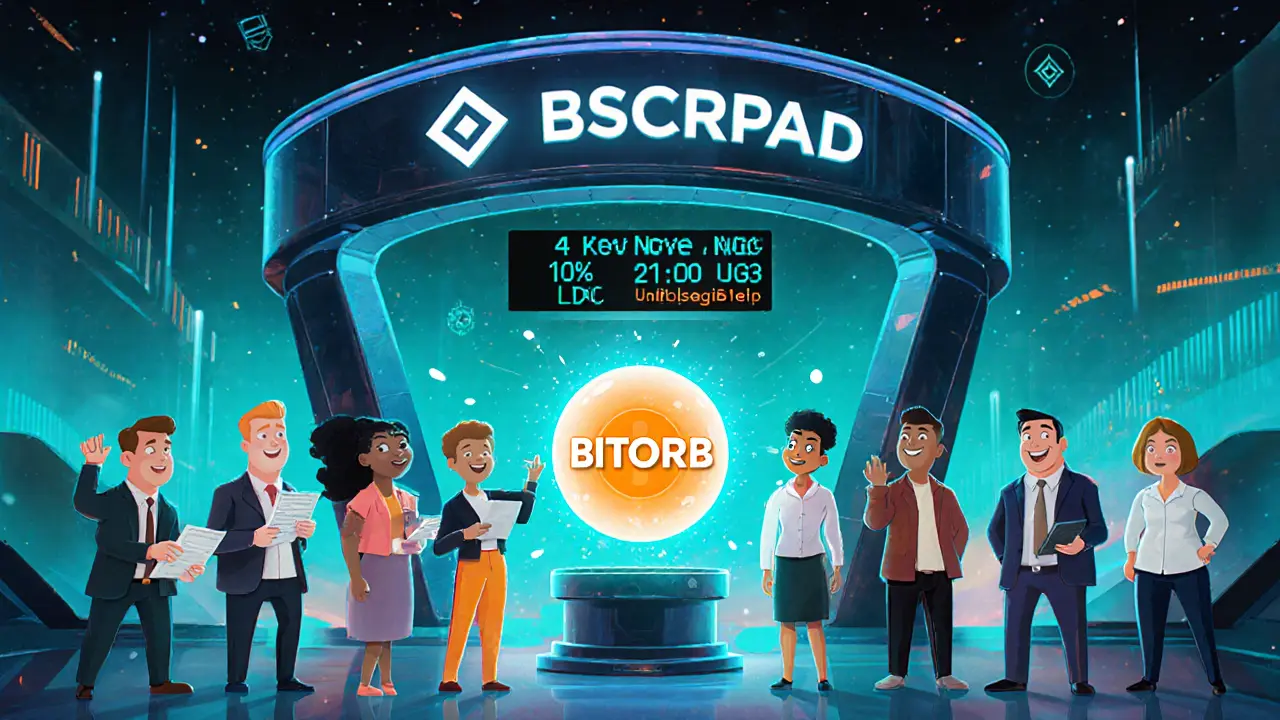BSCPad Launch: What You Need to Know
When working with BSCPad launch, the debut of a crypto token through the BSCPad launchpad on Binance Smart Chain. Also known as BSCPad IDO, it lets projects raise funds while giving early investors a chance to buy at a discount. Binance Smart Chain, a fast, low‑fee blockchain compatible with Ethereum provides the network backbone, and the Initial DEX Offering (IDO), a fundraising model where tokens are sold directly on a decentralized exchange defines the sale structure.
Key Elements of a Successful BSCPad Launch
A BSCPad launch hinges on three pillars: solid tokenomics, community hype, and smooth technical rollout. Tokenomics covers supply caps, distribution ratios, and vesting schedules—these numbers guide investor confidence. Community hype isn’t just memes; it’s real‑world engagement on Telegram, Discord, and Twitter that fuels demand. The technical rollout includes contract audits, BSC compatibility checks, and liquidity lock‑ups, which together reduce fraud risk. In practice, BSCPad launch timelines often follow a clear roadmap: pre‑announcement, whitelist, public sale, and post‑sale listing. Missing any step can stall the whole process.
Understanding how an IDO influences fundraising helps you pick the right projects. An IDO bypasses traditional venture capital, letting anyone with a compatible wallet join the sale. This openness pushes projects to design fair allocation formulas—often a mix of whitelisted slots and open‑lottery draws. The result is a more democratic price discovery, but it also raises the bar for due diligence. Look for audits, transparent team info, and realistic use‑cases before committing.
The Binance Smart Chain ecosystem adds its own flavor. Because BSC offers sub‑one‑dollar transaction fees, projects can afford frequent micro‑transactions, such as rewards or staking mechanisms, without burning user capital. However, the same low fees attract spam and rug pulls, so reputable launchpads like BSCPad impose strict vetting, KYC checks, and liquidity lock periods. These safeguards create a trust loop: investors feel safer, projects gain credibility, and the launchpad’s reputation grows.
Tokenomics design often mirrors the launch’s goals. A typical BSCPad launch might allocate 40% to public sale, 20% to team with a 12‑month vesting, 15% to ecosystem growth, and the rest to liquidity and reserves. These ratios signal how much control the team retains and how much is reserved for future development. Projects with overly generous team allocations often face price dumps after the lock‑up expires, so keep an eye on those numbers.
Beyond the numbers, community incentives keep the token alive after launch. Many BSCPad projects embed staking rewards, liquidity mining, or gamified airdrops to retain holders. For example, a recent BSCPad launch introduced a “stake‑to‑earn” program that distributed a portion of transaction fees back to stakers, boosting long‑term price stability. Such features link back to the broader launchpad strategy: rewarding early supporters while funding ongoing development.
Finally, keep track of post‑launch performance metrics. Volume spikes, price volatility, and holder concentration give you early signals about a token’s health. If a project quickly moves from a launch price to a steep decline, it may be a red flag. Conversely, steady growth, active developer updates, and expanding partnerships indicate a solid foundation. Use tools like BscScan, CoinGecko, and project dashboards to monitor these trends.
Armed with this context, you’ll be better prepared to evaluate any BSCPad launch, spot the promising projects, and avoid common pitfalls. Below you’ll find a curated list of articles that dive deeper into specific tokens, airdrop details, exchange reviews, and more—each tied back to the core ideas covered here.
BitOrbit (BITORB) IDO Airdrop Details, Token Distribution & Analysis
Detailed look at BitOrbit's IDO airdrop, token vesting schedule, market performance and lessons for crypto investors.
- 23
- Read More
